Related Research Articles

Graffiti is art that is written, painted or drawn on a wall or other surface, usually without permission and within public view. Graffiti ranges from simple written words to elaborate wall paintings, and has existed since ancient times, with examples dating back to ancient Egypt, ancient Greece, and the Roman Empire.

Space is the boundless three-dimensional extent in which objects and events have relative position and direction. In classical physics, physical space is often conceived in three linear dimensions, although modern physicists usually consider it, with time, to be part of a boundless four-dimensional continuum known as spacetime. The concept of space is considered to be of fundamental importance to an understanding of the physical universe. However, disagreement continues between philosophers over whether it is itself an entity, a relationship between entities, or part of a conceptual framework.
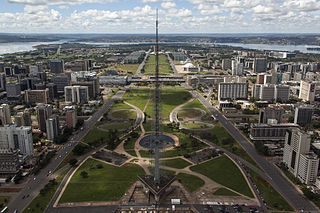
While many assume urban design is about the process of designing and shaping the physical features of cities, and regional spaces, it is also about social design and other larger scale issues. Linking the fields of architecture as well as planning to better organize physical space and community environments.
Public art is art in any media whose form, function and meaning are created for the general public through a public process. It is a specific art genre with its own professional and critical discourse. Public art is visually and physically accessible to the public; it is installed in public space in both outdoor and indoor settings. Public art seeks to embody public or universal concepts rather than commercial, partisan or personal concepts or interests. Notably, public art is also the direct or indirect product of a public process of creation, procurement, and/or maintenance.
Guerrilla art is a street art movement that first emerged in the UK, but has since spread across the world and is now established in most countries that already had developed graffiti scenes. In fact, it owes so much to the early graffiti movement, in the United States guerrilla art is still referred to as ‘post-graffiti art’.

Henri Lefebvre was a French Marxist philosopher and sociologist, best known for pioneering the critique of everyday life, for introducing the concepts of the right to the city and the production of social space, and for his work on dialectical materialism, alienation, and criticism of Stalinism, existentialism, and structuralism. In his prolific career, Lefebvre wrote more than sixty books and three hundred articles. He founded or took part in the founding of several intellectual and academic journals such as Philosophies, La Revue Marxiste, Arguments, Socialisme ou Barbarie, Espaces et Sociétés.
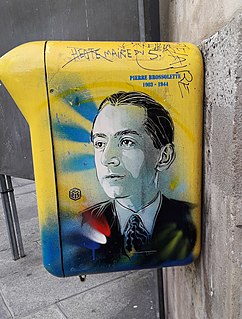
Street art is visual art created in public locations for public visibility. It has been associated with the terms "independent art", "post-graffiti", "neo-graffiti" and guerrilla art.
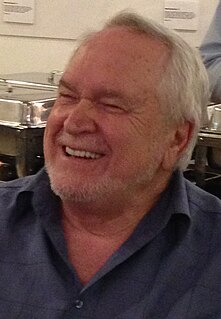
Edward William Soja was a self-described urbanist, a noted postmodern political geographer and urban theorist on the planning faculty at UCLA, where he was Distinguished Professor of Urban Planning, and the London School of Economics. He had a Ph.D. from Syracuse University. His early research focused on planning in Kenya, but Soja came to be known as the world's leading spatial theorist with a distinguished career writing on spatial formations and social justice.
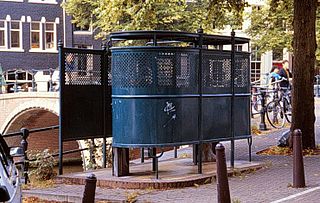
Heterotopia is a concept elaborated by philosopher Michel Foucault to describe certain cultural, institutional and discursive spaces that are somehow ‘other’: disturbing, intense, incompatible, contradictory or transforming. Heterotopias are worlds within worlds, mirroring and yet upsetting what is outside. Foucault provides examples: ships, cemeteries, bars, brothels, prisons, gardens of antiquity, fairs, Muslim baths and many more. Foucault outlines the notion of heterotopia on three occasions between 1966-67. A lecture given by Foucault to a group of architects in 1967 is the most well-known explanation of the term. His first mention of the concept is in his preface to 'The Order of Things' and refers to texts rather than socio-cultural spaces.
Urban art combines street art and graffiti and is often used to summarize all visual art forms arising in urban areas, being inspired by urban architecture or present urban lifestyle. Because the urban arts are characterized by existing in the public space, they are often viewed as vandalism and destruction of private property.
Spatial justice links together social justice and space, most notably in the works of geographers David Harvey and Edward W. Soja. The field analyzes the impact of regional planning and urban planning decisions. It is promoted by the scholarly tradition of critical geography, which arose in the 1970s.
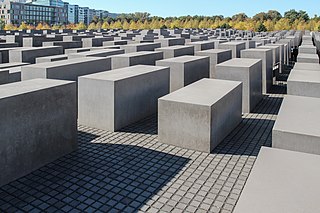
The sociology of space is a sub-discipline of sociology that mostly borrows from theories developed within the discipline of geography, including the sub fields of human geography, economic geography, and feminist geography. The "sociology" of space examines the social and material constitution of spaces. It is concerned with understanding the social practices, institutional forces, and material complexity of how humans and spaces interact. The sociology of space is an inter-disciplinary area of study, drawing on various theoretical traditions including Marxism, postcolonialism, and Science and Technology Studies, and overlaps and encompasses theorists with various academic disciplines such as geography and architecture. Edward T. Hall developed the study of Proxemics which concentrates on the empirical analysis of space in psychology.
The Bienal de La Habana was founded in 1984. It takes place in Havana (Cuba) every two years. It principally aims at promoting the developing world incontemporary art circles, giving priority to Latin American and Caribbean artists, although artists from all over the world submit works.
Geocriticism is a method of literary analysis and literary theory that incorporates the study of geographic space. The term designates a number of different critical practices. In France, Bertrand Westphal has elaborated the concept of géocritique in several works. In the United States, Robert Tally has argued for a geocriticism as a critical practice suited to the analysis of what he has termed "literary cartography".

The right to the city is an idea and a slogan first proposed by Henri Lefebvre in his 1968 book Le Droit à la Ville. This idea has been taken up more recently by social movements, thinkers, and certain progressive local authorities as a call to action to reclaim the city as a co-created space: a place for life detached from the growing effects that commodification and capitalism are proposed to have had over social interaction and the rise of posited spatial inequalities in worldwide cities throughout the last two centuries.
The Africa Centre, in Cape Town, South Africa, is structured as a not-for-profit organisation whose purpose is to provide a platform for Pan-African arts and cultural practice to function as a catalyst for social change. All the projects it conducts, facilitates or supports have some social intention. These projects are supported by a variety of Pan-African artists.
Non-simultaneity or nonsynchronism is a concept in the writings of Ernst Bloch which denotes the time lag, or uneven temporal development, produced in the social sphere by the processes of capitalist modernization and/or the incomplete nature of those processes. The term, especially in the phrase "the simultaneity of the non-simultaneous", has been used subsequently in predominantly Marxist theories of modernity, world-systems, postmodernity and globalization.
Graffiti in Iran consists of different styles. Some are slogans painted by governmental organizations, and some are works of art by regular citizens. During the last few years, Tehran Municipality has been drawing graffiti in order to beautify the city. Much governmental graffiti regards the Iranian Revolution, Islamic Republic of Iran policies and The Politics of Resistance. Pro-democracy activists are also continuing a political graffiti campaign in Tehran. Islamic graffiti can also be seen around the city. Graffiti has long served as a medium of expression through Iran's complicated political history.
Social practice or socially engaged practice is an art medium that focuses on engagement through human interaction and social discourse. Social practice goes by many names, including relational aesthetics, new genre public art, socially engaged artdialogical art, and participatory art. Social practice work focuses on the interaction between the audience, social systems, and the artist or artwork through aesthetics, ethics, collaboration, methodology, antagonism, media strategies, and/or social activism.
Everyday Urbanism is a concept introduced by Margaret Crawford, John Chase and John Kaliski in 1999. Everyday Urbanism is in Margaret Crawford words: ”an approach to Urbanism that finds its meanings in everyday life”. Contrary to New Urbanism, Everyday Urbanism is not concerned with aesthetics but with specific activities of the daily life. It constitutes an empirical approach that strengthens frequently unnoticed existing situations and experiences that occur in everyday life.
References
- Andersson, Ake E., and Andersson, David Emanuel: "Urban Interventionism and Local Knowledge", The Review of Austrian Economics , 17(2/3): 247-64. Reprinted in The Economics of Experiences, the Arts and Entertainment. Edward Elgar Publishing, 2006.
- Dawson, Jessica. "A New Movement in Public Art," The Washington Post, September 16, 2006; Page C05.
- Hall, Tim, and Malcom, Miles. eds. Interventions: Advances in Art and Urban Futures, Volume 4. Intellect Books, Bristol, UK, 2005.
- Pruesse, Kym, ed. Accidental audience: Urban interventions by artists. Offsite Collective, Toronto, 1999.